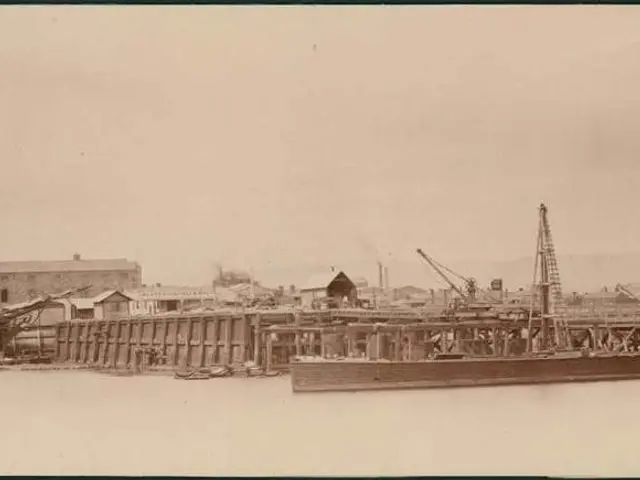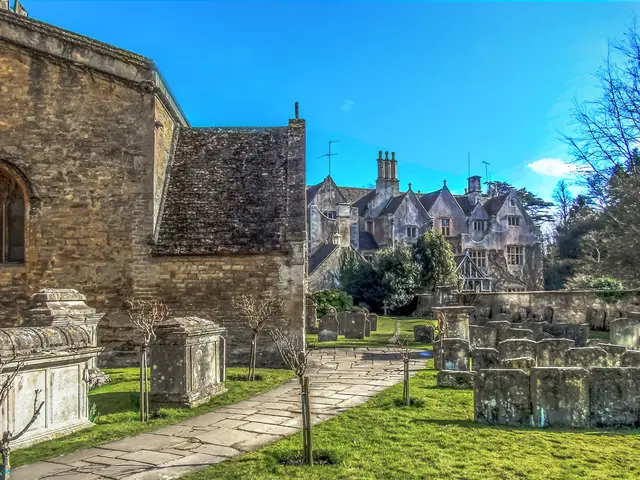Active Clock Manufacturers in Canada during the 1950s Decade
In the early 20th century, Canada was home to a thriving clock industry with several notable manufacturers. One of the earliest was the Forestville Clock Company, initially known as the Blackforest Clock Company, which was established in Toronto in 1928. The company sourced movements from England, France, and Germany and continued in business until the late 1970s.
Another significant player was the Pequegnat Clock Company, founded by Arthur Pequegnat in 1904. The company operated until 1941 and was renowned for its high-quality clocks. The Pequegnat Clock Company is recognized as one of Canada's premier clock companies, and its name still carries respect as a quality clock-maker. The company produced the Maple Leaf series of kitchen clocks and both movements and cases.
The Canadian Neon-Ray Clock Company, based in Montreal, was another notable manufacturer. It produced "Bulb Illuminated" advertising clocks from about 1942 to the mid-1960s. New Haven Clock Company, of Brantford, Ontario, made mantel and wall clocks for schools and offices with Canadian wood cases and imported spring-driven pendulum movements. Walter Clocks, also of Toronto, produced mantel clocks with walnut veneer cases and hinged back doors before WWII, and with stained birch wood and unique removable round doors after WWII. Production continued up to the late 1950s.
Seth Thomas Clocks, based in Peterborough, Ontario, produced mantel, alarm, and wall clocks for the Canadian market from 1931 to the mid-1980s. Westclox Canada, located in Peterborough, Ontario, was known for its Big Ben and Baby Ben windup and electric alarm clocks produced between 1920 and the early 1980s.
The Ingraham Canadian Clock Company, also of Toronto, made wall and alarm clocks for the Canadian market from the late 1940s until at least 1980. Snider Clock Manufacturing Company Limited, of Toronto, flourished from 1950 to 1976 and was known for its unique clock designs and effective construction methods.
Most of these ten Canadian clock companies active in the 1950s and 1960s no longer operate as independent entities under those names today. Seth Thomas Clocks, for instance, was eventually absorbed by larger conglomerates and does not exist today as an independent Canadian manufacturer, though vintage Seth Thomas clocks remain collectible. Snider Clock Manufacturing Company Limited is known for vintage starburst clocks from the 1960s that are now collectible antiques, but there is no evidence that Snider still operates or survived into the modern market under its original identity.
Westclox Canada and Ingraham Canadian Clock Company were Canadian extensions or licensed production lines of U.S. clock companies, many of which underwent consolidation or closure by late 20th century; no current Canadian operations under those names are documented. New Haven Clock Company, originally American, had Canadian operations but ceased production decades ago, and the brand is mostly historical. Canadian Neon-Ray Clock Company and Forestville Clock Company are largely defunct or absorbed, with no indications of continuing independent production.
Canadian General Electric, which produced electric alarm, table, and kitchen wall clocks for the Canadian market from the 1930s into at least the 1950s, continues as a major corporation but shifted away from clock manufacturing, focusing on broader electrical products. Breslin Industries, based in Toronto, produced clocks with horse themes and used Ingraham-type wind-up movements, but shows little to no recent activity or online presence, indicating ongoing operation or survival into the current market. Walter Clocks also shows little to no recent activity or online presence.
In summary, none of these companies appear to have directly survived as standalone clock manufacturers in Canada today. Their legacy mostly exists through collectibles and brand heritage rather than ongoing production. If any entities still exist, they have either shifted focus drastically or been absorbed into larger conglomerates, losing their original identities. Thus, the independent "Canadian clock company" market from that era has largely vanished or transformed beyond recognition.
The Canadian Clock Museum, located at 60 James Street, Deep River, Ontario, is a testament to the rich history of Canadian clock manufacturing. The museum is operated by curator Allan Symons and houses a vast collection of Canadian-made clocks, providing a glimpse into the past and preserving the legacy of these once-thriving companies.
- The legacy of vintage Canadian clock companies, such as the Forestville Clock Company, Pequegnat Clock Company, and Seth Thomas Clocks, lives on through collectibles and brand heritage, despite no longer operating as independent entities today.
- Breslin Industries, known for its horse-themed clocks, and Walter Clocks, once a significant player in the clock industry, show little to no recent activity or online presence, suggesting they may have shifted focus or been absorbed.
- Food-and-drink enthusiasts might be intrigued to know that Canadian General Electric, which was involved in clock manufacturing during the mid-20th century, continues as a major corporation, but has moved away from clock production.
- For those interested in travel, a visit to the Canadian Clock Museum in Deep River, Ontario, offers a fascinating insight into the rich history of Canadian clock manufacturing and the legacy of the once-thriving clock companies.
- Clock enthusiasts who appreciate lifestyle and fashion-and-beauty trends should take note of the starburst clocks from the 1960s produced by Snider Clock Manufacturing Company Limited, now considered collectible antiques.




